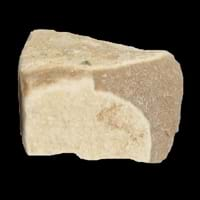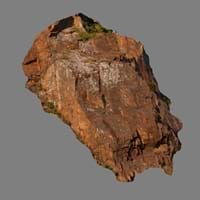Definition
Mudstone is a fine-grained, dark gray sedimentary rock, which is formed from silt and clay and is similar to shale but has less laminations
Granophyre is a type of granitic rock which consists of intergrown feldspar and quartz crystals in a medium to fine grained groundmass
Discoverer
Unknown
Unknown
Etymology
From the English mud and stone, from low German mudde and stainaz
From German Granophyr, from Granit granite + Porphyr
Class
Sedimentary Rocks
Igneous Rocks
Sub-Class
Durable Rock, Soft Rock
Durable Rock, Hard Rock
Group
Not Applicable
Volcanic
Other Categories
Fine Grained Rock, Opaque Rock
Coarse Grained Rock, Fine Grained Rock, Medium Grained Rock, Opaque Rock
Texture
Clastic
Granophyric
Color
Black, Blue, Brown, Green, Grey, Orange, Red, White, Yellow
Black, Grey, Orange, Pink, White
Durability
Durable
Durable
Appearance
Rough and Dull
Veined or Pebbled
Interior Uses
Decorative Aggregates, Entryways, Floor Tiles, Interior Decoration
Bathrooms, Countertops, Decorative Aggregates, Entryways, Floor Tiles, Flooring, Homes, Hotels, Interior Decoration, Kitchens, Stair Treads
Exterior Uses
As Building Stone, As Facing Stone, Paving Stone, Roof Tiles
As Building Stone, As Facing Stone, Bridges, Garden Decoration, Office Buildings, Paving Stone
Other Architectural Uses
Curbing
Not Yet Used
Construction Industry
Cement Manufacture, Construction Aggregate, for Road Aggregate, Making natural cement, Raw material for the manufacture of mortar
As Dimension Stone
Medical Industry
Not Yet Used
Not Yet Used
Antiquity Uses
Sculpture, Small Figurines
Artifacts, Monuments, Sculpture, Small Figurines
Commercial Uses
Creating Artwork, Pottery
Curling, Gemstone, Laboratory bench tops, Tombstones
Types
Marl, Shale and Argillite
Not Available
Features
Available in Lots of Colors and Patterns, Smooth to touch, Very fine grained rock
Available in Lots of Colors and Patterns, It is One of the Oldest, Strongest and Hardest Rock
Archaeological Significance
Monuments
Not Yet Used
Used
Famous Monuments
Not Applicable
Data Not Available
Famous Sculptures
Data Not Available
Data Not Available
Pictographs
Used
Not Used
Petroglyphs
Used
Not Used
Formation
Mudstone forms when very fine-grained clay particles are deposited in water which settle at the bottom of water bodies. They are buried and compacted by overlying sediment hence forming mudstone.
Granophyre is a fine-grained, hard rock which is a type of metasomatite, essentially altered basalt. It forms with or without crystallization, either below the surface as intrusive rocks or on the surface as extrusive rocks.
Mineral Content
Biotite, Chlorite, Feldspar, Micas, Muscovite or Illite, Plagioclase, Pyrite, Quartz
Hornblade, Orthoclase, Plagioclase, Quartz
Compound Content
Aluminium Oxide, NaCl, CaO, Iron(III) Oxide, Silicon Dioxide
Aluminium Oxide, CaO, Iron(III) Oxide, FeO, Potassium Oxide, MgO, MnO, Sodium Oxide, Phosphorus Pentoxide, Silicon Dioxide, Titanium Dioxide
Types of Metamorphism
Not Applicable
Burial Metamorphism, Impact Metamorphism
Types of Weathering
Chemical Weathering, Mechanical Weathering
Biological Weathering
Types of Erosion
Chemical Erosion, Sea Erosion
Glacier Erosion, Sea Erosion, Wind Erosion
Grain Size
Very fine-grained
Medium to Fine Coarse Grained
Fracture
Not Available
Not Available
Porosity
Highly Porous
Less Porous
Luster
Dull
Dull to Grainy with Sporadic parts Pearly and Vitreous
Compressive Strength
Not Available
Cleavage
Perfect
Not Available
Toughness
2.6
Not Available
Specific Gravity
2.2-2.8
2.6-2.7
Transparency
Opaque
Opaque
Density
2.4-2.8 g/cm3
2.6-2.8 g/cm3
Resistance
Heat Resistant, Impact Resistant
Heat Resistant, Wear Resistant
Deposits in Eastern Continents
Asia
Bangladesh, China, India, Russia
China, India, Iran, Saudi Arabia, Sri Lanka, Taiwan, Thailand, Turkey, Vietnam
Africa
Ethiopia, Kenya, Morocco, South Africa, Tanzania
Angola, Egypt, Madagascar, Namibia, Nigeria, South Africa
Europe
Austria, France, Germany, Greece, Italy, Romania, Scotland, Spain, Switzerland
Austria, Belgium, Finland, France, Germany, Italy, Norway, Sardinia, Spain, Switzerland, The Czech Republic, Venezuela
Others
Not Yet Found
Not Yet Found
Deposits in Western Continents
North America
USA
Canada, USA
South America
Bolivia, Chile, Colombia, Ecuador, Peru, Venezuela
Not Yet Found
Deposits in Oceania Continent
Australia
New South Wales, New Zealand, Queensland, Victoria, Western Australia
Not Yet Found










